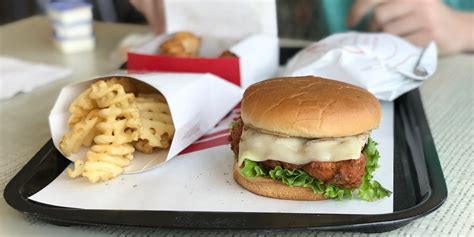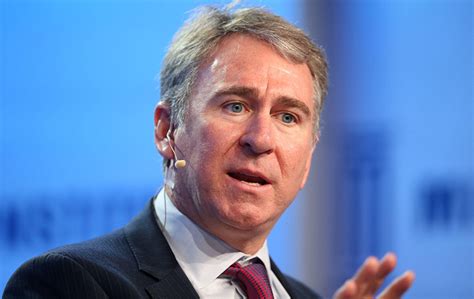
Opening a fast-food franchise requires a significant investment, with initial costs varying widely depending on the brand. Chick-fil-A represents one of the more substantial investments, demanding between $342,990 and $1,982,220, while McDonald’s ranges from $1,314,500 to $2,297,500. Other notable franchises include Taco Bell, with estimated costs between $575,600 and $3,370,100, and Dunkin’, ranging from $439,300 to $1,637,700. These figures encompass franchise fees, real estate, equipment, and initial operating capital, offering potential franchisees a glimpse into the financial commitments required to enter the competitive fast-food market.
The allure of owning a fast-food franchise often stems from the established brand recognition and proven business models these chains offer. However, the path to becoming a franchisee involves navigating a complex financial landscape, with each brand presenting its own unique set of costs and requirements. The investment ranges reflect the varying business models, real estate requirements, and brand-specific operational demands across different fast-food entities. For aspiring entrepreneurs, understanding these financial nuances is crucial for making informed decisions and securing the necessary capital.
Chick-fil-A, renowned for its customer service and distinctive menu, requires a relatively lower initial franchise fee of $10,000. However, the company maintains a unique approach, selecting franchisees who are committed to actively operating the restaurant. According to Chick-fil-A’s franchise disclosure documents, the estimated initial investment ranges from $342,990 to $1,982,220. This investment covers startup costs, including real estate, equipment, and other necessary expenses to begin operations. The company’s active involvement in site selection and restaurant setup distinguishes it from other franchise models.
McDonald’s, a global fast-food behemoth, demands a more significant initial investment. The estimated cost to open a McDonald’s franchise ranges from $1,314,500 to $2,297,500. This substantial investment includes franchise fees, property costs, equipment, and initial working capital. McDonald’s maintains stringent operational standards and provides extensive training and support to franchisees, reflecting the brand’s commitment to consistency and quality. The high cost reflects the value of the globally recognized brand and the comprehensive support system offered to franchisees.
Taco Bell, known for its Mexican-inspired fast food, presents a wide range of investment costs. The estimated initial investment to open a Taco Bell franchise falls between $575,600 and $3,370,100. This range reflects variations in real estate costs, construction, and equipment based on location and restaurant format. Taco Bell offers different franchise options, including traditional restaurants and smaller express formats, impacting the overall investment required. Prospective franchisees must meet specific financial criteria and demonstrate a commitment to the brand’s operational standards.
Dunkin’, a leading coffee and baked goods chain, requires an estimated initial investment ranging from $439,300 to $1,637,700. This investment covers franchise fees, real estate, equipment, and initial inventory. Dunkin’ offers a variety of franchise models, including standalone stores and co-branded locations, providing flexibility for franchisees. The brand’s established reputation and strong customer base contribute to its appeal among potential franchisees. Dunkin’ also emphasizes operational efficiency and provides comprehensive training to ensure consistent product quality and customer service.
Other notable fast-food franchises also require significant initial investments. Domino’s, a pizza delivery giant, estimates its initial investment between $143,700 and $689,700. This range encompasses franchise fees, real estate, equipment, and initial operating costs. Subway, known for its customizable sandwiches, ranges from $182,200 to $530,400 in estimated initial investment. These figures reflect the varying business models and operational requirements of each franchise.
Arby’s, known for its roast beef sandwiches, has an estimated initial investment between $787,900 and $2,578,500. Pizza Hut, another major pizza chain, ranges from $367,800 to $2,628,500. Sonic Drive-In, with its retro-themed drive-ins, requires an estimated initial investment between $1,247,800 and $3,536,900. These costs highlight the diverse financial commitments required across different segments of the fast-food industry.
Wendy’s, known for its square burgers, falls within the $1,166,000 to $3,706,500 range for initial investment. Burger King, a major competitor to McDonald’s, requires an estimated $1,426,600 to $4,039,600 to open a franchise. These figures illustrate the competitive landscape and the substantial capital required to establish a presence in the fast-food market. Each franchise offers unique operational models and brand identities, attracting different types of investors and entrepreneurs.
The financial considerations for opening a fast-food franchise extend beyond the initial investment. Ongoing costs include royalties, marketing fees, and operational expenses, which can significantly impact profitability. Franchise agreements typically require franchisees to pay a percentage of their gross sales as royalties and contribute to national marketing campaigns. Managing these ongoing costs effectively is crucial for long-term success.
Moreover, securing financing for a fast-food franchise can be a challenging process. Lenders often require detailed business plans, financial projections, and evidence of managerial experience. Franchisees may need to explore various financing options, including small business loans, private equity, and partnerships. A thorough understanding of financial management and access to adequate capital are essential for navigating the financial complexities of franchising.
The decision to invest in a fast-food franchise involves careful consideration of various factors, including personal financial goals, risk tolerance, and operational capabilities. Conducting thorough due diligence, researching different franchise opportunities, and seeking professional advice are crucial steps in the decision-making process. The potential rewards of owning a successful fast-food franchise can be significant, but the financial commitments and operational demands require careful planning and execution.
The fast-food industry remains a dynamic and competitive sector, with ongoing trends shaping consumer preferences and business models. Adapting to changing consumer tastes, embracing technology, and maintaining operational efficiency are key factors for success in the fast-food market. Franchisees who can effectively navigate these challenges and capitalize on emerging opportunities are well-positioned to thrive in the long term.
The information presented provides a snapshot of the estimated costs associated with opening various fast-food franchises. These figures are based on franchise disclosure documents and industry estimates, and actual costs may vary depending on specific locations, market conditions, and individual business circumstances. Prospective franchisees should consult with franchise experts and conduct thorough financial analysis to make informed investment decisions.
The fast-food industry’s resilience and adaptability continue to attract entrepreneurs seeking opportunities in established brands. However, the significant financial investments and operational demands require careful consideration and strategic planning. Understanding the costs, challenges, and potential rewards of franchising is essential for making informed decisions and achieving long-term success in the competitive fast-food market.
Opening a fast-food franchise is more than just a financial investment; it’s a commitment to adhering to established brand standards, providing consistent customer service, and managing a complex operation. Franchisees benefit from the brand’s recognition and marketing efforts, but they also must follow the franchisor’s guidelines and regulations. This balance between autonomy and compliance is a key aspect of the franchise model.
The cost ranges highlighted for each franchise take into account multiple factors. Real estate, for instance, is a significant variable. A prime location in a high-traffic area will naturally command a higher lease or purchase price than a less desirable location. Construction and remodeling costs also fluctuate based on the site’s condition and the specific requirements of the franchise. Equipment, including kitchen appliances, point-of-sale systems, and furniture, represents another substantial expense.
Furthermore, the initial investment includes working capital, which is the money needed to cover day-to-day operating expenses such as payroll, inventory, and utilities. The amount of working capital required can vary depending on the franchise’s sales volume and the efficiency of its operations. Franchisees must also factor in marketing and advertising costs, which are essential for attracting customers and building brand awareness in the local market.
Training is a critical component of the franchise model. Most franchisors provide extensive training programs for new franchisees and their staff. These programs cover various aspects of the business, including food preparation, customer service, inventory management, and marketing. The cost of training is typically included in the initial franchise fee or may be a separate expense.
Beyond the initial investment, franchisees must also pay ongoing fees to the franchisor. These fees typically include royalties, which are a percentage of gross sales, and marketing fees, which are used to fund national or regional advertising campaigns. Royalties compensate the franchisor for the use of its brand name, trademarks, and business systems. Marketing fees help to maintain brand awareness and attract customers.
Securing financing for a fast-food franchise can be a daunting task. Banks and other lenders typically require a significant down payment and a strong credit history. Franchisees may also need to provide collateral, such as real estate or equipment, to secure the loan. The Small Business Administration (SBA) offers loan programs that can help franchisees obtain financing, but these programs often have strict eligibility requirements.
Before investing in a fast-food franchise, it is essential to conduct thorough due diligence. This includes reviewing the franchise disclosure document (FDD), which contains detailed information about the franchise system, including its financial performance, legal history, and franchisee obligations. Prospective franchisees should also speak with existing franchisees to learn about their experiences and challenges.
Choosing the right franchise is a critical decision. Factors to consider include the franchisee’s personal interests, financial resources, and business experience. It is also important to evaluate the franchise’s brand reputation, market potential, and support system. A well-established brand with a strong support system can increase the chances of success.
The fast-food industry is constantly evolving, with new trends and technologies emerging all the time. Franchisees must be able to adapt to these changes to remain competitive. This may involve investing in new equipment, updating their menus, or implementing new marketing strategies. Staying informed about industry trends and best practices is essential for long-term success.
The success of a fast-food franchise depends on several factors, including the franchisee’s managerial skills, customer service, and operational efficiency. Franchisees must be able to effectively manage their staff, control costs, and provide a positive customer experience. A strong work ethic, attention to detail, and a commitment to quality are essential for success.
Ultimately, investing in a fast-food franchise is a significant financial and personal commitment. It requires careful planning, thorough research, and a strong dedication to hard work. While the potential rewards can be substantial, the risks are also significant. Prospective franchisees should carefully weigh the pros and cons before making a decision.
The appeal of franchising lies in the ability to leverage a proven business model and brand recognition. However, this comes with the responsibility of upholding brand standards and adhering to the franchisor’s operational guidelines. Successful franchisees are those who can strike a balance between autonomy and compliance. They are able to effectively manage their businesses while staying true to the brand’s values and principles.
The fast-food landscape is becoming increasingly competitive, with new players entering the market and established brands vying for market share. Franchisees must be proactive in adapting to changing consumer preferences and technological advancements. This may involve embracing digital marketing, implementing online ordering systems, or offering delivery services.
The financial aspects of franchising extend beyond the initial investment and ongoing fees. Franchisees must also carefully manage their cash flow, control costs, and maximize profitability. This requires a strong understanding of financial management principles and the ability to make sound business decisions.
The regulatory environment for franchising is complex and varies from state to state. Franchisees must comply with various laws and regulations, including those related to labor, food safety, and consumer protection. It is essential to seek legal advice to ensure compliance and avoid potential liabilities.
The relationship between the franchisor and franchisee is a critical factor in the success of the franchise system. A strong and supportive franchisor can provide valuable guidance, training, and resources. However, a strained or adversarial relationship can negatively impact the franchisee’s business.
The long-term success of a fast-food franchise depends on the franchisee’s ability to build a loyal customer base, maintain a positive reputation, and adapt to changing market conditions. This requires a commitment to providing excellent customer service, maintaining high-quality standards, and staying ahead of the competition.
In conclusion, opening a fast-food franchise is a complex and challenging endeavor that requires careful planning, significant financial investment, and a strong commitment to hard work. While the potential rewards can be substantial, the risks are also significant. Prospective franchisees should conduct thorough due diligence, seek professional advice, and carefully weigh the pros and cons before making a decision. The fast-food industry continues to evolve, and franchisees who can adapt to change and maintain a focus on customer satisfaction will be best positioned for long-term success.
Frequently Asked Questions (FAQ)
1. What is the typical initial investment range for opening a Chick-fil-A franchise?
According to the article, the estimated initial investment to open a Chick-fil-A franchise ranges from $342,990 to $1,982,220. However, Chick-fil-A has a unique approach to franchising, selecting operators rather than passive investors and maintaining active involvement in site selection and setup.
2. What are the key factors that influence the cost of opening a McDonald’s franchise?
The cost of opening a McDonald’s franchise, ranging from $1,314,500 to $2,297,500, is influenced by several factors including the franchise fee, property costs (which can vary greatly depending on location), equipment, and initial working capital. McDonald’s also maintains stringent operational standards, which may require specific investments in technology and training.
3. How does the initial investment for a Taco Bell franchise compare to that of a Dunkin’ franchise?
The estimated initial investment for a Taco Bell franchise ranges from $575,600 to $3,370,100, while for a Dunkin’ franchise, it ranges from $439,300 to $1,637,700. Taco Bell’s higher upper range may be due to variations in real estate costs, construction, and equipment based on location and restaurant format.
4. Besides the initial investment, what other ongoing costs should a prospective fast-food franchisee be aware of?
Beyond the initial investment, franchisees should be aware of ongoing costs such as royalties (typically a percentage of gross sales), marketing fees (contributions to national or regional advertising campaigns), and operational expenses like payroll, inventory, and utilities. Effective management of these ongoing costs is crucial for profitability.
5. What steps should someone take to secure financing for a fast-food franchise?
Securing financing typically involves developing a detailed business plan, creating financial projections, and demonstrating managerial experience. Potential franchisees may need to explore various financing options, including small business loans, private equity, and partnerships. Lenders often require a significant down payment, a strong credit history, and collateral to secure the loan. It’s also advisable to consult with financial advisors specializing in franchise financing.









